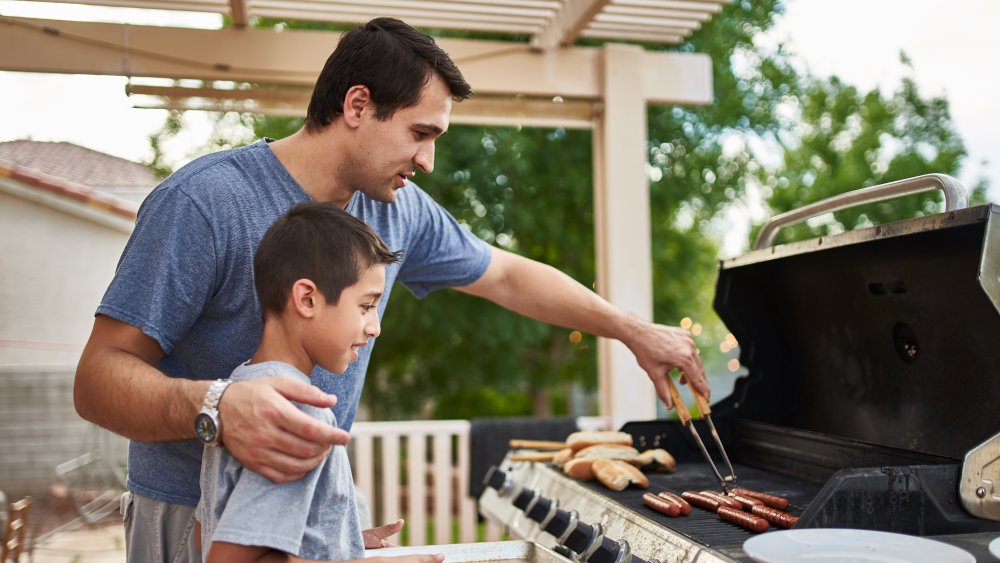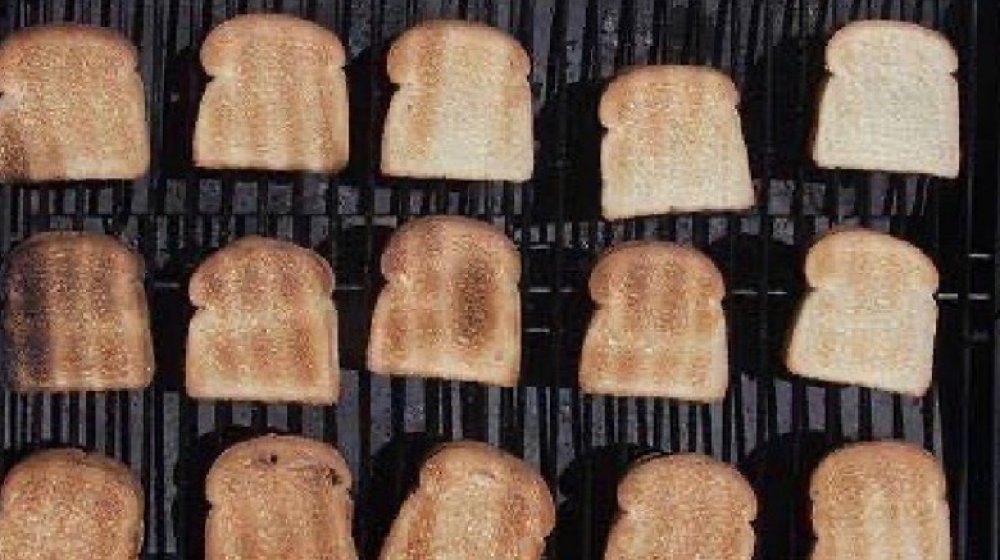Here's How To Find Your Grill's Hot Spots
If you've ever accidentally overcooked food on your grill, it may not be your fault – unless you're heavy-handed with the lighter fluid. That is your fault. But if you're making your best effort on the grill and still turning up with scorched food, hot spots may be to blame. Before you burn another expensive steak or render your grilled chicken breasts inedible, you may want to take a minute to get to know your grill a little better. Just like the oven in your kitchen, grills tend to have hot spots. These are areas that get hotter than others and cook food faster as a result (via The Kitchn). If you learn how to find your grill's hot spots, you can actually use them to your advantage.
Foods don't all cook at the same temperature, so, according to Bon Appétit, your grill surface shouldn't have a uniform temperature either. Adjusting the heat of your gas grill, or arranging the coals in your charcoal grill to be warmer on one side than the other creates two zones. Two-zone heat provides a cool area to slowly and gently cook your food and a hot area for searing your food. Identifying your grill's hot spots will help you set up your zones for success. Here's how to do it.
Use a loaf of bread to find your grill's hot spots
Finding your grill's hot spots requires about 20 minutes of your time and a loaf of white bread. Before you begin, Eat This, Not That! says you can draw a picture of your grill on a piece of paper and divide it into quadrants. Or just plan to use a camera phone. Next, light your grill (with the lid open) and turn the burners to medium. Then close the lid and let it heat up for about 15 minutes.
Once your grill is preheated, open the lid and quickly place the slices of bread on the grill in even rows, separating each slice by an inch or two. Then shut the lid for two minutes. Your bread should be toasted at this point so use tongs to flip over each slice, placing it back down in its original spot. If you see pieces of toast that are much darker than others or burned – those are your grill's hot spots. Mark the spots on the diagram you drew of your grill, or just snap a photo on your phone to reference later. Now you know which side of your grill to designate as the hot zone and which side to save for the cooler zone. And, more importantly, your chances of turning out perfectly grilled food just got a lot better.

